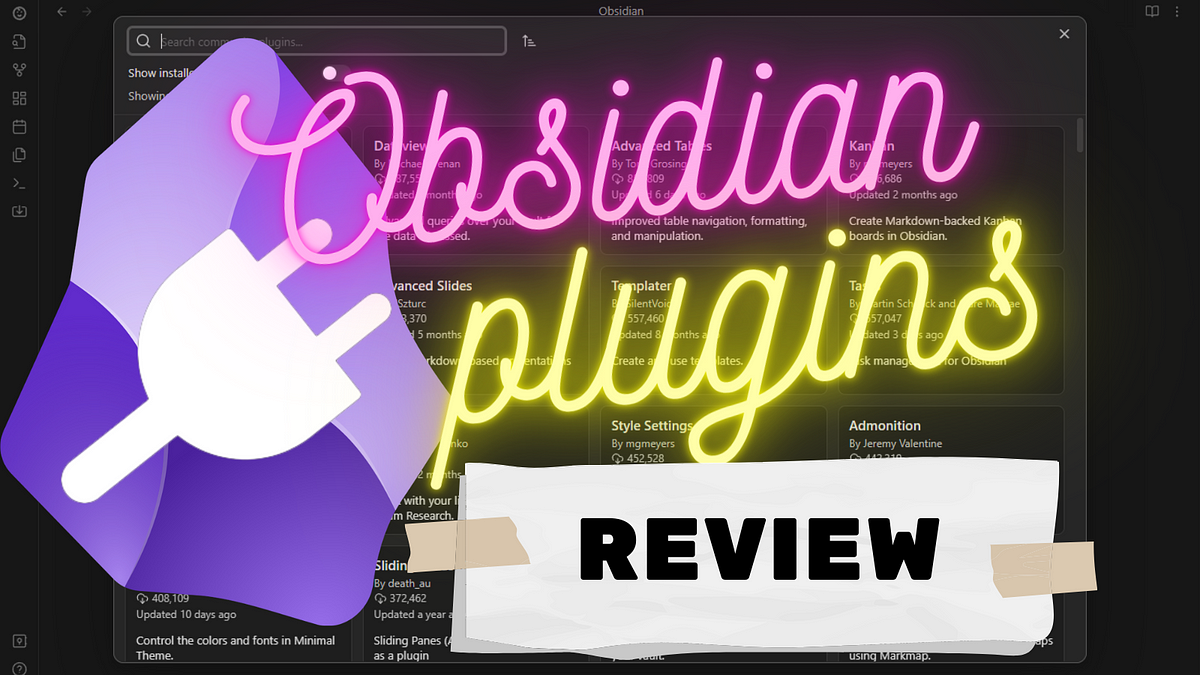Obsidian Plugins Review: Enhancing Note-Taking and Productivity
Core Concepts
Enhance note-taking and productivity with new plugins.
Abstract
Standalone Note here
Introduction to the latest Obsidian plugins promising improved note-taking and knowledge management.
Emphasis on enhancing the user experience through plugin integration.
Detailed exploration of various plugins and their potential benefits for productivity.
Conclusion highlighting the significance of leveraging plugins for an elevated Obsidian experience.
Obsidian Plugins Review — 50
Stats
N/A
Quotes
N/A
Key Insights Distilled From
by Nuno Campos at medium.com 03-22-2024
https://medium.com/technology-hits/obsidian-plugins-review-50-4155acafb019
Deeper Inquiries
How do these new plugins compare to existing tools in the market?
The new plugins introduced in this Obsidian Plugins Review offer unique features and functionalities that set them apart from existing tools in the market. These plugins are designed specifically to enhance note-taking and knowledge management within the Obsidian platform, providing users with a more tailored and efficient experience. Compared to generic note-taking apps or productivity tools, these plugins cater to the specific needs of Obsidian users, offering specialized capabilities such as advanced search options, custom themes, interactive graphs, and more. By focusing on enhancing the core functionalities of Obsidian, these new plugins provide a level of customization and optimization that may not be available in other general-purpose tools.
What potential drawbacks or limitations might users face when integrating multiple plugins?
While integrating multiple plugins can significantly enhance the user experience within Obsidian, there are potential drawbacks and limitations that users may face. One major concern is compatibility issues between different plugins, especially if they have overlapping functionalities or conflicting settings. Users may encounter bugs, errors, or performance issues when using multiple plugins simultaneously if they are not properly optimized for integration. Additionally, managing a large number of plugins can lead to increased complexity in configuration settings and maintenance tasks. Users may find it challenging to keep track of updates, dependencies, and conflicts among various plugins. Moreover, relying heavily on third-party developers for plugin support can introduce security risks or reliability concerns into the workflow.
How can the concept of plugin integration be applied in other technological domains for enhanced user experiences?
The concept of plugin integration demonstrated within Obsidian can be applied across various technological domains to enhance user experiences in different software applications. By allowing third-party developers to create extensions or add-ons that seamlessly integrate with existing platforms or systems, users can customize their workflows according to their specific requirements. For example:
In web browsers: Users can install browser extensions/plugins that add functionality like ad-blocking features,
password managers,
or productivity tools directly into their browsing environment.
In project management software: Teams can leverage integrations with external services (e.g., Slack,
Google Drive) through custom-built
plugins
to streamline communication,
file sharing,
and task tracking within one unified interface.
In graphic design programs: Artists/designers could benefit from plugin ecosystems that offer additional brushes,
filters,
or effects
to expand creative possibilities without switching between different software applications.
By embracing open-source development practices
and fostering collaboration among developers
and end-users,
the concept of plugin integration empowers individuals
and organizations alike
to tailor technology solutions according to their evolving needs while promoting innovation
and efficiency across diverse industries
0
